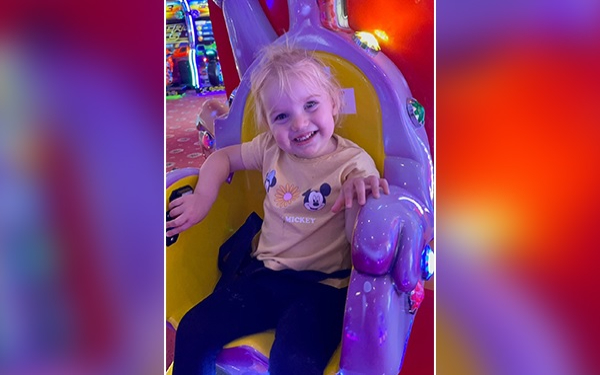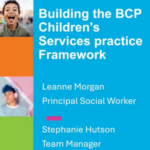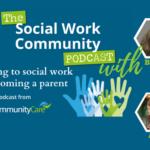
The murder of a two-year-old girl by her mother’s boyfriend has highlighted the need for guidance on protecting children when families move across council boundaries, a local child safeguarding practice review (CSPR) has concluded.
The panel reviewing the case of Isabella Jonas-Wheildon, who moved area twice in the weeks before she died, said it showed that issues around cross-border working and information sharing needed to be addressed.
It called on Central Bedfordshire Safeguarding Children Partnership, which commissioned the review, to raise the issue with the Child Safeguarding Practice Review Panel with a view to it developing national guidance on cross-border working.
The national panel, which is responsible for reviewing serious cases and drawing lessons from them, said this was “an important issue which we take very seriously”. It added that it would be addressed in the report of its national review into the case of Baby M, which was initiated in October 2023.
Toddler murdered by mother’s boyfriend
Isabella’s body was found on 30 June 2023 at a hostel in Ipswich, Suffolk; it was estimated that she had been dead for about three days. She had extensive bruising and fractures to her wrist and pelvis, with the latter causing bone marrow to enter her bloodstream triggering an embolism that, along with skeletal trauma, caused her death.
The injuries were all inflicted after her mother, Chelsea Gleason-Mitchell, started a relationship with Scott Jeff, in May 2023.
In December 2024, Jeff was jailed for a minimum of 26 years after being found guilty of murdering Isabella, along with two counts of child cruelty. Gleason-Mitchell was imprisoned for 10 years after pleading guilty to causing or allowing the death of a child and two counts of child cruelty.
Alleged domestic abuse
Isabella spent most of her life in the Central Bedfordshire area with her parents. Gleason-Mitchell had been known to children’s services in the area herself and had a history of mental health problems, including anxiety, depression, self-harm and suicidal ideation.
She separated from Isabella’s father in April 2023, making allegations of domestic abuse against him that, at the criminal trial, she said were untrue.
This prompted a referral to Central Bedfordshire’s children’s services, after which Gleason-Mitchell was allocated an independent domestic violence advocate (IDVA), while she also made a homelessness application on the grounds that she was fleeing domestic abuse.
However, she rejected an offer of temporary accommodation after being told that her new boyfriend – Jeff – could not stay with her there.
Jeff was also known to multiple services in Central Bedfordshire due to diagnoses of ADHD and autism, mental health problems, longstanding issues with anger management and reported domestic abuse. During the police enquiry into Isabella’s death, Jeff’s former partner disclosed domestic abuse by him, including coercive control, several assaults and, on one occasion, strangulation.
Multiple moves in Isabella’s final weeks
On 1 June 2023, Gleason-Mitchell, Jeff and Isabella moved to Great Yarmouth in Norfolk and the couple made a housing application.
Great Yarmouth council offered emergency accommodation to Gleason-Mitchell and Isabella, but not Jeff, an offer which was not taken up. They were subsequently found to be staying in a tent on the beach by the police, after which they were given temporary accommodation.
The case was referred to Norfolk children’s services, via the emergency duty team, on 19 June 2023. However, on the same day, the family moved across council boundaries again, to Ipswich in Suffolk.
Gleason-Mitchell and Jeff made an application for housing to the local borough council, claiming they were fleeing domestic abuse from Isabella’s father, and were offered temporary accommodation.
Referrals were also made to Suffolk children’s services, both by Ipswich council’s housing service and Central Bedfordshire council.
Child protection or child in need
Over email, Central Bedfordshire advised that Suffolk undertake a child protection enquiry, under section 47 of the Children Act 1989, because Isabella appeared to be at risk of significant harm. It said this was on the grounds that the family were at risk of being street homeless, had not acted to safeguard Isabella by turning down accommodation twice, had not been open with agencies and had left Norfolk without a plan to safeguard the child.
Central Bedfordshire added that Gleason-Mitchell appeared to be prioritising Jeff over Isabella, and that its housing staff and those in Great Yarmouth had raised concerns about him being controlling. It offered to be part of any strategy discussion to determine whether a section 47 should proceed.
However, following a multi-agency safeguarding hub (MASH) assessment, Suffolk decided to undertake a child in need assessment, under section 17, on the grounds that the threshold for a strategy discussion had not been met. It concluded that the most significant concern – homelessness – had been addressed and that the other issues could be explored through a section 17 assessment.
The case was passed to the child in need team on 23 June, but the first attempt to contact Gleason-Mitchell was not until 28 June, two days before Isabella was found dead. Suffolk has since tightened up its procedures so that an attempt to contact the family takes place no later than one day after a case is passed to a team for assessment.
‘Siloed’ decision making
The review panel concluded that the case had been characterised by “siloed” decision making by agencies, particularly when the family moved across areas at speed.
This included Isabella’s voice and lived experience not being considered by professionals in the last month of her life, Gleason-Mitchell’s vulnerabilities as a parent not being taken into account and the failure to examine records to uncover knowledge of Jeff and the potential risks he posed.
The review recommended that Central Bedfordshire Safeguarding Children Partnership should:
- Seek assurance from agencies that they always include the voice and lived experience of children, including toddlers and those who are not able to fully communicate verbally, in their assessments and actions, and ask them to provide evidence of the methods they use.
- Remind agencies that assessments and interactions with families consider the role, presence and history of partners living in, or closely associated with, a household.
- Raise professionals’ awareness and understanding of domestic abuse and neglect, including that these are always harmful to children and that practitioners should be able to spot the signs and symptoms of coercive control.
- Initiate discussions with the Child Safeguarding Practice Review Panel to consider developing regional or national guidance on cross-border safeguarding.
Cross-border safeguarding being considered in national review
A Child Safeguarding Practice Review Panel spokesperson said: “Isabella’s death was deeply tragic and shocking…The local review raises important issues about the quality of information sharing and risk assessment across agencies. These issues need to be addressed at both a local and a national level.
“The Child Safeguarding Practice Review Panel has noted the review’s recommendation about the need for national guidance to support the protection of children when families move across geographic areas.
“It is an important issue which we take very seriously as has been highlighted in other reviews. We intend therefore to address this issue further in the report on our national review about Baby M.”
Agencies acting on recommendations
In a joint statement, Central Bedfordshire, Suffolk, and Norfolk’s safeguarding children partnerships said all the agencies involved had started implementing the recommendations.
They added: “This has been a case that has touched many people across our counties, and all the safeguarding partnerships involved in this statement have been truly shocked. We all offer our sincere condolences to Isabella’s family and will continue to offer support to anyone who has been affected by her death.”
On behalf of Central Bedfordshire Council, executive member for children and families Steve Owen said: “My focus is on ensuring that the learning from Isabella’s story makes a real difference here in Central Bedfordshire and beyond, and on doing our utmost to keep children, especially young children, as safe as possible.
“I know officers in Central Bedfordshire have been deeply saddened by Isabella’s death and have already implemented many of the recommendations. I will also contact my counterparts in Suffolk and Norfolk to see how we can, together, ensure Isabella’s story brings real change across our areas to better protect children.”







 Bournemouth, Christchurch and Poole
Bournemouth, Christchurch and Poole  Hampshire County Council
Hampshire County Council  Oxfordshire County Council
Oxfordshire County Council  South Gloucestershire Council
South Gloucestershire Council  Wokingham Borough Council
Wokingham Borough Council  Webinar: building a practice framework with the influence of practitioner voice
Webinar: building a practice framework with the influence of practitioner voice  ‘They don’t have to retell their story’: building long-lasting relationships with children and young people
‘They don’t have to retell their story’: building long-lasting relationships with children and young people  Podcast: returning to social work after becoming a first-time parent
Podcast: returning to social work after becoming a first-time parent  How managers are inspiring social workers to progress in their careers
How managers are inspiring social workers to progress in their careers  Workforce Insights – showcasing a selection of the sector’s top recruiters
Workforce Insights – showcasing a selection of the sector’s top recruiters 

 Facebook
Facebook X
X LinkedIn
LinkedIn Instagram
Instagram
Surely, it’s bread and butter, right?
What is the meaning of the Child?
A longitudinal review of systemic attitudes overtime is overdue, no?
Let’s start with Yoni Ann Byfield, a 7 year old girl, shot alongside Bertram Byfield a man assumed to be her Dad but not, whilst staying with him in London but also in the care of Birmingham Council …. and theres more; children deaths that is!
Information sharing will only become meaningful when the legal concepts and definitions of the terms ‘to hold’ [Information] require an indivisible obligation ie the information gathered by one authority is to be treated as if the same by another authority ~ it’s a duck-rabbit arrangement for sure re-creating the urgency for the primacy of and standardisation of ‘The Meaning of The Child’ throughout all public facing services, no?
Obviously a tragedy.
But another aspect of the ‘siloed thinking’ may have been overlooked. The potential input – preventative and possibility of raising the alarm -of the poor girl’s father. He appears to have been excluded following allegations against him of domestic abuse, despite their later, but before the horror of the murder – being agreed to be false. Yes, DA is a real problem – witness the previous record of the new partner. But it is also weaponised falsely to exclude someone. Another possibility social services also need to be aware of
Its about time government brought in a usable IT system that is national, LAs tend go for cheapest, some not fit for purpose. They need be able transfer across councils in real time to prevent children being referred by phone or email, being re MASHed, causes delay.
Having a national system means once they move, all records can be accessed by receiving
Info only accesible by the current LA until transfered.
Plus, workers will be used to the system as is a nationwide one.
Not rocket science.
Thankyou to Community Care for posting this and allowing comments. Without this very few people would hear about this review and its messages.
What a surprise someone calling for a usable national IT system. We actually had one for a short period of time it was called Contact point. An evaluation report that was never published praised the system although there were a few security problems.
ContactPoint was a government database in England that provided a way for those working with children and young people to find out who else is working with the same child or young person, making it easier to deliver more coordinated support. It was created in response to the abuse and death of eight-year-old Victoria Climbié in 2000 in England. Various agencies involved in her care had failed to prevent her death, in particular by individually never realising other agencies had been in contact with Victoria.
ContactPoint aimed to improve child protection by improving the way information about children was shared between services. The database, created under the Children Act 2004, cost £224m to set up and £41m a year to run. It operated in 150 local authorities, and was accessible to at least 330,000 users.
Then as all new governments work they criticise the previous regime and then overturn positive ideas. On 12 May 2010 the new UK Coalition Government announced plans to scrap ContactPoint[1] and on 6 August 2010 the database was shut down. It cost the taxpayer almost another £250,000,000 to shut down re paying off contracts.
now we’re talking! keep doing so …
what were the Munroe recommendations that went with this decision?
… the direction in case law for some time has pointed, then, as now away from state liability and not towards increased responsibility/accountabilities and especially where an authority has [in tort] created the conditions within which harm arises or is caused by an act or omission …
… amendments to the FOIA requirements of ‘to hold’ are still a prerequisite, no? …
Q: To what extent is toxic positivity creating poor decision making? Prof Munroe described ‘human performance’, then in real time, as the main reason for fatalities in Children’s Services. Will the Crime and Police Bill, now address this?